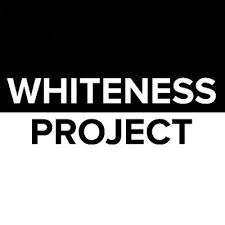 (I am just going to start out by saying that this so-called documentary, project, interactive whatever, is: cringeworthy, telling, and painful to watch. I have yet to decide if it adds to the conversation on whiteness.)
(I am just going to start out by saying that this so-called documentary, project, interactive whatever, is: cringeworthy, telling, and painful to watch. I have yet to decide if it adds to the conversation on whiteness.)
Filmmaker Whitney Dow, who has been recognized as “making smart films about race” with Marco Williams (or as Dow refers to him, “my Black producing partner”) decided to get serious about race. Dow believes that, “If white people are going to participate in changing the racial dynamic, we need to deal with our own shit.”I agree. In 2014 Dow premiered his documentary, The Whiteness Project, on PBS. The project is a multi-media documentary described as an investigation into how Americans who are white identify with being white.

Dow gets that white supremacy is one of the central organizing forces in American life and, that white is “the most powerful racial identity in America”. He does not want white Americans to get away from identifying themselves as being white. During an interview with CBS, Dow argued that being white is a defining characteristic that actively “impacts every interaction of every moment in our day.” The goal of his project is to encourage debate about the role of whiteness in American society among white people; people who “have been very tentative about engaging.” He offers the project as venue to help white people reflect on white identity and white privilege.
The Whiteness Project website states:
“By engendering debate about the role of whiteness in American society and encouraging white Americans to become fully vested participants in the ongoing debate about the role of race in American society, The Whiteness Project aims to inspire reflection and foster discussions that ultimately lead to improved communication around issues of race and identity.”
White individuals are filmed within a white frame with an intense focus on their face. There are no other distractions: no background, no interviewer presence, no interviewer voice. The viewer immediately understands that the participants are asked a series of questions about being white in general. The only conversation in the film is when the participants are talking to the camera. The audience gets to know the questions only from the interviewee’s comments, such as; “Do I think it is beneficial for me to be white?”, “Do I think about race?”, or “Do I feel a common bond with white people?” Between each screen interview a statistic is given. The statistics are there to help the audience place the views in a societal context and, to hopefully provide some fodder for self-reflection.

